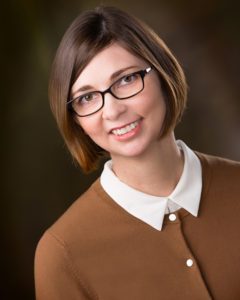Amanda Hovious
 What attracted you to information science as a profession and field of study?
What attracted you to information science as a profession and field of study?
My professional and research interests have always crossed multiple fields of study, and information science provides an avenue to embrace that interdisciplinary.
In what area of information science do you practice, teach or do research? What about that area of practice/study made you choose it?
I am a former librarian turned PhD student at the University of North Texas College of Information. My background in public and academic libraries—combined with a second master’s degree in instructional design and technology—serves as the basis for my research interests. I am studying ways to measure the text complexity of multimodal texts (e.g., interactive digital novels) to provide educators with a decision-making tool for integrating developmentally appropriate digital literature into the curricula.
Why did you join ASIS&T and what does your membership in ASIS&T do for you?
I am active in the student chapter of ASIS&T at my institution. I also hope to make connections with like-minded researchers and practitioners and discover new research interests at the organization’s annual meetings.
What advice would you give to young people contemplating information science as a potential profession or field of study?
Information science is a broad and ever-evolving field of study that is responsive to the changing needs of our digital society. For young people who are interested in a profession that requires them to constantly learn and grow, information science offers multiple professions from which to choose.
What do you think will be the biggest challenge for those working in information science in the next decade?
I think that the biggest challenge for those working in information science in the next decade will be in identifying and implementing viable systemic solutions for the problems that information technology has already created. We are just beginning to recognize the breadth of problems created by such technologies as social media and the Internet of Things. It will be up to the information scientists of tomorrow to be the problem finders, solutions analysts, and futurists who can predict how new technologies will impact society.
